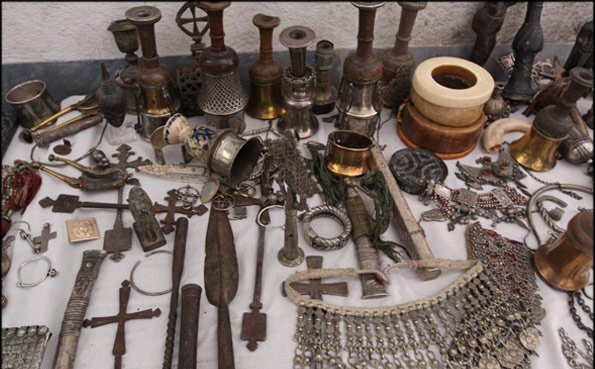40 prehistoric, ancient relics restored to closest original states

TEHRAN – A total of 40 Iranian relics, which date from the prehistorical times to the Islamic era, have recently been restored to their closest original states.
“40 historical and cultural objects have been restored in Markazi province. Dating from various prehistorical eras to the Seljuk era, the relics include a needle, arrowhead, clamp, crucifix, plate, cup, glass, coin, ax, a bird figurine, and so on,” the deputy provincial tourism chief, Mohsen Rahmati, said on Tuesday.
“Reparation, eliminate of deposits, cleaning, stabilizing, and protecting against moisture were performed during the restoration projects, which cost some 300 million rials ($714 at the official exchange rate of 42000 rials per dollar),” the official said.
Moreover, a Seljuk-era stucco, which belongs to the 12th-century Jameh Mosque of Saveh, was restored to former glory, he added.
Sometimes referred to as “a museum of Islamic architecture”, the mosque is still a big source of charm for the faithful, sightseers, and buffs of history and Islamic architecture. It comprises a courtyard, porch, minaret, dome, and two archaic altars ornamented with Kufic calligraphic works.
The mosque is named after Saveh, in the central Iranian city. The terms “Jameh Mosque” or “Masjed-e Jameh” or “Friday Mosque” are used in Iran for a grand communal mosque where mandatory Friday prayers are/were performed: the phrase is used in other Muslim countries but only in Iran does it designate this purpose.
AFM
